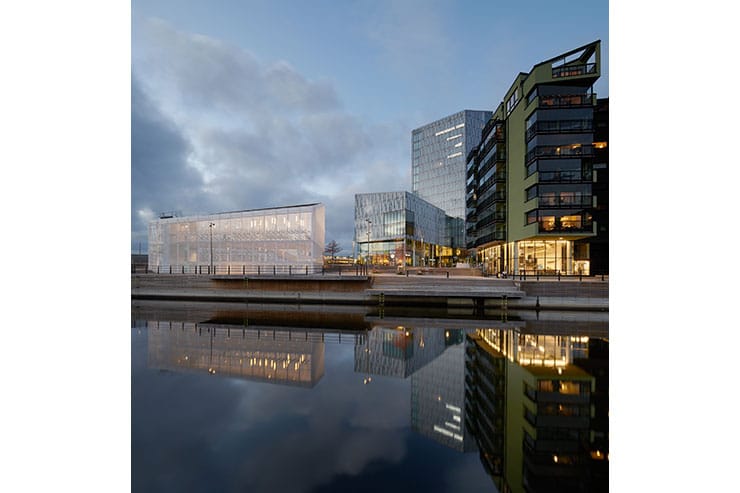- ABOUT
- JUDGING
- CONTACT
- MORE
- 2024 Entries
- Installations 2024
- Past Winners
- Subscribe
- [d]arc directory
- arc magazine
- darc magazine
Gamlestaden Bicycle Garage, Sweden
ProjectGamlestaden Bicycle GarageLocationGothenburg, SwedenLighting DesignSweco Architects, SwedenClientTrafikkontoret Göteborg StadLighting SuppliersLuxlight Skandinavien, Willy Meyer+Sohn, iGuzzini, Color KineticsPhotographyBert Leandersson (photo), Bert Leandersson and Sergio Joselovsky (film)
Gothenburg’s first bicycle parking building has been built at the Gamlestads Torg travel hub. The project is part of the City of Gothenburg’s sustainable urban development with the city’s aim to become a cycling city. The building consists of three floors and offers close to 600 bicycle spaces, including spaces for special bicycles and a service station.
This project will stand as an inspiration for future facilities in the city and the lighting design has to deliver on several crucial points. The team created a sustainable solution where the lighting aims to strengthen the attractiveness of cycling as a means of transport, clarify the building’s function, and create a safe place with good visual connection from the interior as well as the exterior, regardless of the time of day.
The team designed the shape and lighting of the building simultaneously so that all parts interact without competing. The facade material consists of thin perforated sheet metal that creates an airy and transparent building. On the inside slender supporting pillars enhances the verticality and conveys a spacious interior experience. The lighting planning has been of utmost importance to create a beautiful architecture with a good lighting environment both during the day and night.
Luminaires were evaluated both visually and technically through lighting calculations, digital mock-ups, VR, and test lighting. This way the luminaires harmonize with the building’s architecture, where the light highlights the different parts of the building and enhances the height of the building. Light in different hierarchies focuses on the entrance, important vertical surfaces, and the service station. The right light in the right place.
Light levels and colour temperatures have been chosen with care to meet the light levels outside the building in a good way all year round without glare and large contrasts. Luminaires have high visual comfort and good colour rendering, while at the same time being adapted for a public outdoor environment with a high IK and IP rating. The luminaires are divided into light zones that are either activated by astronomical timer or by motion detectors.
The transparency of the façade has been studied carefully to understand the interplay with the surrounding environment. The lit ceiling is reflected by and passes through the building’s facade at night playing a leading role in the building’s appearance. This ceiling light changes with stepless color temperature from cold light in the evening to warm light at midnight when the individual’s need for comfort is greatest. At holidays and events during the year, the ceiling is colored in a theme that suits the occasion. The top floor stands out with its impressive ceiling height and sloping roof. At the highest point of the ceiling, bespoke cylindrical luminaires hang to enhance the almost ecclesiastical spaciousness.
Together with the building’s transparency, the light has created a symbiosis between inside and outside that affects the urban space and the movement patterns in the place where the sloping ceiling and the light’s reflections together create a work of art in the room.









